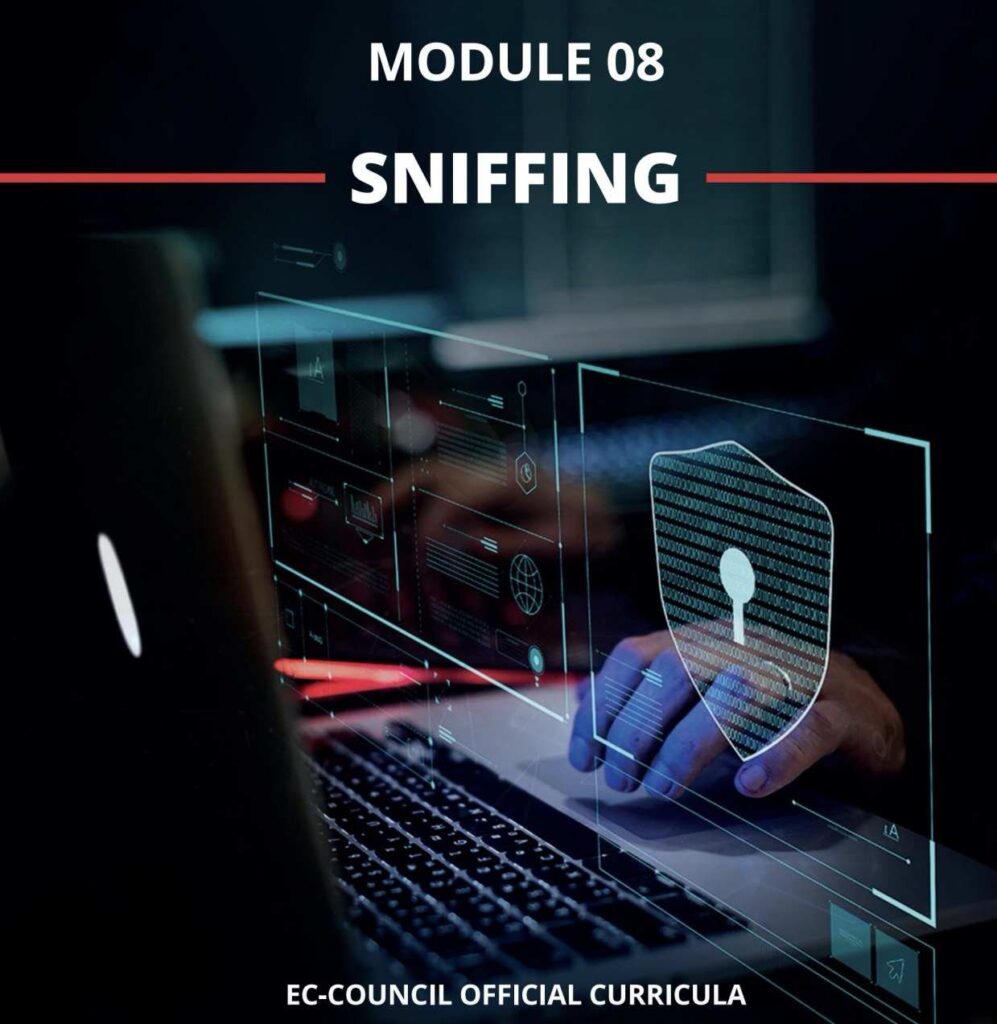CEH v12 Module 08: Sniffing, also known as packet analysis or network sniffing, is the process of capturing and examining the data flowing across a computer network.
This technique is commonly used by network administrators and security professionals to monitor and troubleshoot networks.
However, it can also be exploited by malicious actors for unauthorized and malicious purposes, such as discovering vulnerabilities or capturing sensitive information.
Packet-Sniffing Techniques:
- Promiscuous Mode:
- In a network, devices generally ignore data not intended for them. However, in promiscuous mode, a network interface card (NIC) captures all data, not just the traffic destined for that specific device.
- Hub-based Sniffing:
- Hubs broadcast data to all connected devices. Attackers can connect to a hub and capture all the traffic passing through it.
- ARP Spoofing:
- Address Resolution Protocol (ARP) spoofing involves sending fake ARP messages to associate the attacker’s MAC address with the IP address of a legitimate network device. This allows the attacker to intercept and analyze the traffic.
- DNS Spoofing:
- Domain Name System (DNS) spoofing redirects DNS queries to malicious servers. Attackers can intercept and manipulate the DNS responses, leading to the capture of sensitive data.
- Wireless Sniffing:
- Attackers can capture wireless traffic using tools that monitor and capture packets over Wi-Fi networks. This can be particularly effective in public Wi-Fi environments.
Uses for Discovering Network Vulnerabilities:
- Password Sniffing:
- Attackers may capture login credentials, including usernames and passwords, transmitted in plaintext over the network.
- Session Hijacking:
- Sniffed data can be used to hijack active sessions, gaining unauthorized access to systems or applications.
- Data Interception:
- Sensitive information, such as credit card numbers or personal details, transmitted over unencrypted connections can be intercepted.
- Network Mapping:
- Analyzing network traffic can help attackers identify devices, services, and vulnerabilities within a network.
Countermeasures to Defend Against Sniffing Attacks:
- Encryption:
- Use protocols that encrypt data in transit, such as HTTPS for web traffic, SSH for secure shell connections, and VPNs for secure communication.
- Switched Networks:
- Unlike hubs, switches forward data only to the intended recipient, reducing the exposure of data to potential sniffers.
- Network Monitoring and Intrusion Detection Systems (IDS):
- Implement monitoring tools and IDS to detect unusual patterns or behaviors indicative of sniffing activity.
- ARP Spoofing Detection:
- Utilize tools or techniques to detect and prevent ARP spoofing attacks, such as static ARP entries or ARP spoofing detection tools.
- Segmentation:
- Divide the network into segments and use firewalls to restrict unnecessary communication, limiting the impact of sniffing within the network.
- Regular Audits:
- Conduct regular security audits to identify and address vulnerabilities before they can be exploited.
Implementing a combination of these countermeasures can significantly enhance the security of a network and protect against sniffing attacks.
Regularly updating systems and educating users about security best practices are also crucial components of a comprehensive security strategy.








